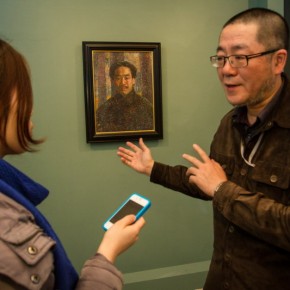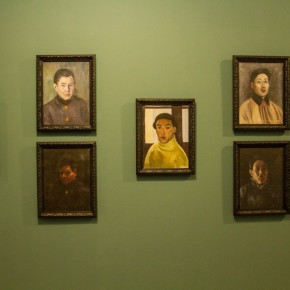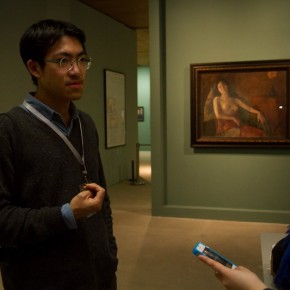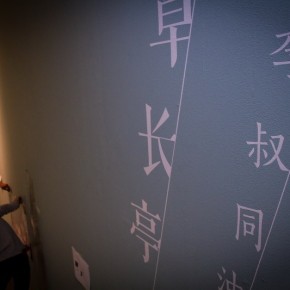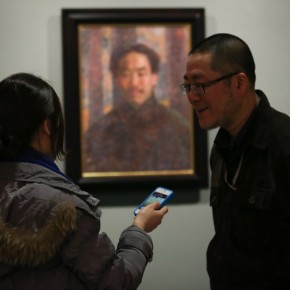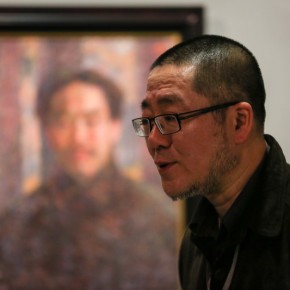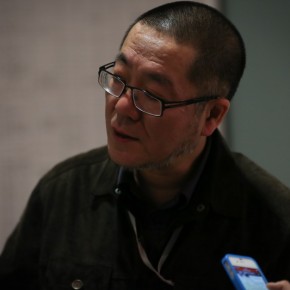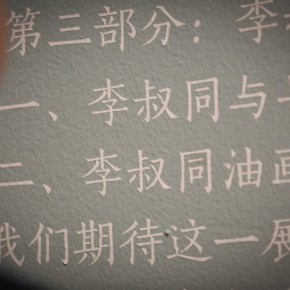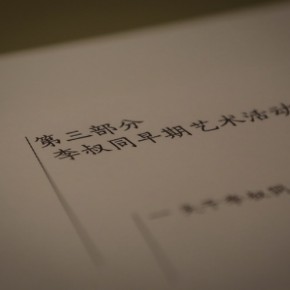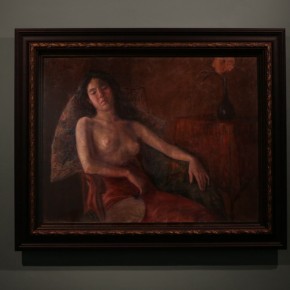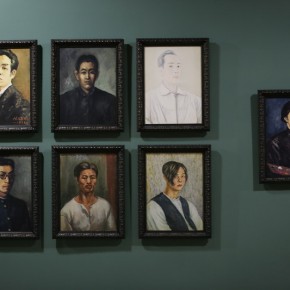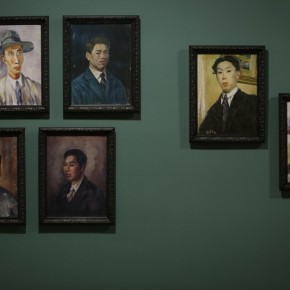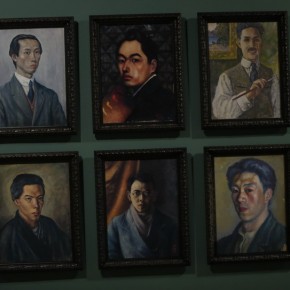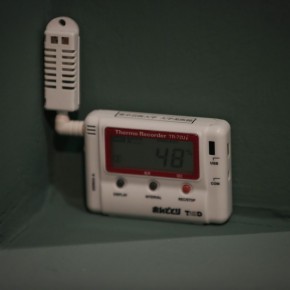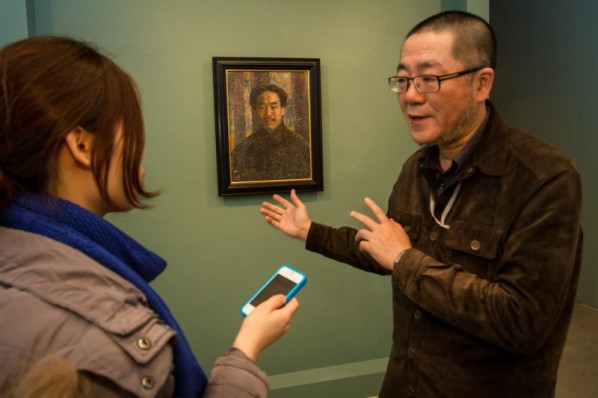
“Li An’s Self-Portrait”, an outstanding work created during Li Shutong’s study in Japan, successfully arrived at CAFA Art Museum at noon on February 28, 2013, specially escorted by Ms Haruna Seryo, an assistant of the Tokyo University of the Arts Art Museum, and out of the container and fixed on the wall, at the direction of the staff from Japan. It is a key work in the exhibition “Long-lasting Fragrance – Study on Li Shutong’s Oil Paintings”, on display together with “Half-naked Woman Figure”, discovered at the CAFA Art Museum two years ago.
“Li An’s Self-Portrait” belongs to the collection of the Tokyo University of the Arts, Li Shutong was named “Li An” when studying at the Tokyo School of Fine Arts, now named the Tokyo University of the Arts. According to the practice of the Tokyo School of Fine Arts, graduates of the Department of Western Painting should leave their alma mater a self-portrait. A lot of Chinese students’ self-portraits are in the collection of the Tokyo School of Fine Arts, among them is Li Shutong’s self-portrait. In addition, a large number of imitation works of Chinese students’ self-portraits are on display.
Wang Huangsheng, Director of CAFA Art Museum said, in fact, when the Director of the Tokyo University of the Arts Art Museum visited CAFA Art Museum before the discovery of the “Half-naked Woman’s Figure”, Wang told him he wanted to borrow the work as well as other self-portraits for a special exhibition. Because these self-portraits had never been exhibited in China, they could be constituted in materials of the study on the status of the early Chinese students in Japan. The “Half-naked Woman’s Figure” was discovered later at the CAFA Art Museum, thus we hoped to borrow “Li An’s Self-Portrait” from Tokyo especially for this exhibition.
Wang Huangsheng explained the reason why none of the self-portraits of Chinese students in the current show except that Li Shutong were original ones: on the one hand, because there are too many works, the museum lacked the funds to borrow all the self-portraits; on the other hand, the museum deliberately borrowed the “Li An’s Self-Portrait” to highlight Li’s special significance.
He said when he decided to plan this exhibition last year, he discussed with the Tokyo University of the Arts, who immediately agreed. Although Tokyo did not ask for any payment, it still cost a lot of money, with the expense of transportation, insurance, personnel escorts, the designated transportation companies, as well as the stringent requirements during the transport, such as its flight, it was really expensive. But as a promising art museum of increasing standards, Wang said it should accept such conditions, borrowing works in accordance with the standard practice for an exhibition. As for security and maintenance, there are Japanese temperature and humidity monitor facilities along with the painting.
It is not the first time for CAFA Art Museum to borrow a work for the exhibition, but it is a unique starting point and significant. Wang said, different from the exhibitions from the Uffizi and the Louvre, a loan of relative big quality and packed in the whole, it borrowed only one work, starting from its value of study and particular subject matter and artist, and of important cultural significance, even if it was small.
“Long-lasting Fragrance – Study on Li Shutong’ Oil Paintings”, opened on March 1, 2013, is divided into three parts, featuring the related study on the re-discovery of Li Shutong’s “Half-naked Woman’s Figure”, Li Shutong’s “Self-Portrait” and the overview of the statues of early Chinese students in Japan, as well as the early art activities of Li Shutong. It will remain on display until April 25.
Text by Duan Ziying and Translated by Chen Peihua
Photography by Hu Zhiheng


